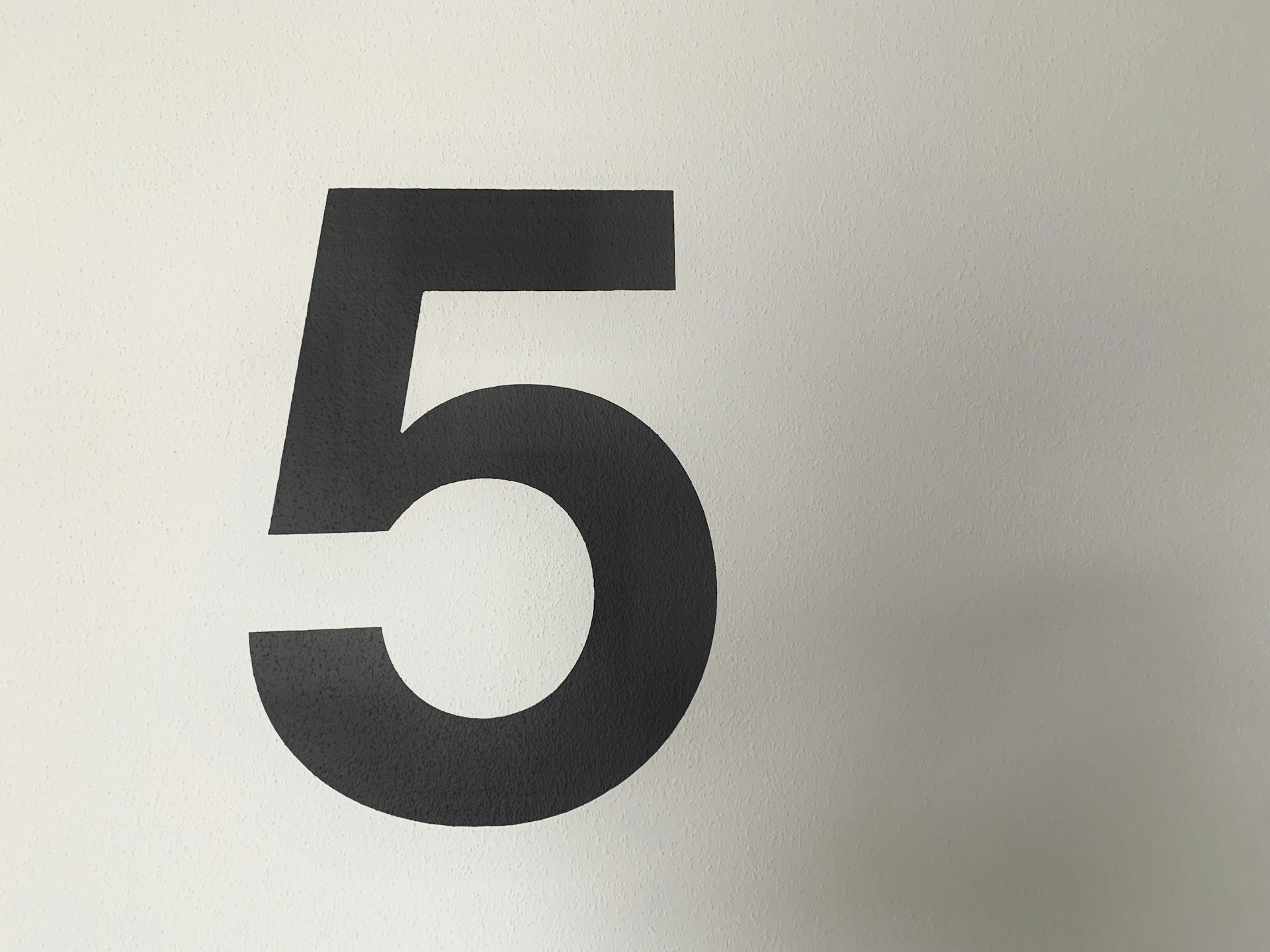Transform Your Life with Effective Decluttering Lifestyle Routines

Photo by Anne Nygård on Unsplash
Introduction: Why Decluttering Lifestyle Routines Matter
Adopting decluttering lifestyle routines is more than just tidying up your living space-it’s a holistic approach that simplifies your daily experience, reduces stress, and boosts productivity. A clutter-free environment supports better focus, fosters a sense of calm, and allows you to prioritize the things that matter most. By integrating sustainable routines, you can maintain order with minimal effort and reap the benefits of a simplified lifestyle over time [1] .
The Foundation: Building Regular Decluttering Habits
The cornerstone of effective decluttering is regular, intentional routines. Experts recommend setting aside a specific time each week or month to declutter one area at a time, such as a drawer, a closet, or a digital folder. Start small-focus on manageable spaces to build momentum. Sort items into clear categories: keep, donate, sell, recycle, or discard. This stepwise approach prevents overwhelming yourself and ensures consistent progress [1] .
Example: If you have a cluttered kitchen drawer, dedicate 15 minutes to sorting through its contents. Remove anything you no longer use, wipe the drawer clean, and only return items that serve a purpose. Over time, repeating this process for other areas will transform your entire home.
Challenges: Many people struggle to find time or motivation for regular decluttering. To overcome this, schedule decluttering sessions in your calendar and treat them as non-negotiable appointments. Enlist family members or roommates to help and make it a shared activity.
Daily Decluttering Routines for a Tidy Home
Consistency is key. Creating daily routines makes decluttering second nature and prevents mess from accumulating. Some proven strategies include:
- Everything Has a Home: Assign a specific place for each item in your home. For instance, use a hook by the door for keys or a basket for incoming mail. This simple habit saves time searching for misplaced items and keeps surfaces clear [2] .
- Clean High-Impact Areas Daily: Focus on spaces that become messy quickly, like kitchen counters or entryways. Spend a few minutes each day putting away items, wiping surfaces, or vacuuming. Small daily actions prevent clutter from spiraling out of control.
- 10-Minute Decluttering Projects: Set a timer for 10 minutes and tackle a single area-such as a shelf, a desk, or a bathroom cabinet. The sense of accomplishment from finishing a small task motivates you to continue [2] .
Implementation Guidance: Start your day by making your bed and clearing your bedside table. In the evening, spend five minutes resetting your living room or preparing your workspace for the next day. These micro-routines compound over time, creating a consistently organized environment.
Minimalist Principles: The One-In, One-Out Rule
One of the most effective ways to prevent clutter is to follow the “one-in, one-out” rule. For every item you bring into your home-whether clothing, gadgets, or kitchen tools-make a conscious decision to remove another. This encourages mindful consumption and ensures your possessions remain manageable [1] .
Practical Steps: Before purchasing something new, ask yourself if it truly adds value or if you’re replacing an existing item. Apply this rule to all areas, including digital spaces (like deleting old files when adding new ones). If you’re unsure what to remove, keep a donation box accessible and add items throughout the month.
Alternative Approaches: Some experts recommend a “one-in, two-out” rule for those struggling with excess clutter, ensuring that your overall number of possessions steadily decreases [4] .
Popular Decluttering Methods: Pick What Works for You
Different decluttering techniques suit different personalities and needs. Here are several widely recognized methods:
- KonMari Method: Popularized by Marie Kondo, this method involves sorting items by category (e.g., clothes, books, papers) and keeping only those that “spark joy.” It’s an emotional approach that helps you develop a deeper connection with your belongings [3] .
- The Four-Box Method: When tackling a cluttered room, set up four boxes labeled: keep, donate, sell, and discard. Quickly sort items to avoid indecision and streamline the process.
- 10-Minute Declutter: Focus on a single drawer or surface for a short, fixed period. This is ideal for people with limited time or for maintaining progress between larger decluttering sessions [2] .
- Minimalism Game: Challenge yourself to remove one item on the first day, two on the second, and so on for 30 days. By the end, you’ll have cleared hundreds of items.
Case Study: One family implemented the KonMari method over several weekends, reporting a more peaceful home and reduced arguments over lost items. Another individual found the 10-minute daily declutter effective for maintaining a small apartment.

Photo by Escuela Moda on Unsplash
Maintaining Decluttered Spaces: Long-Term Routines
Once you’ve decluttered, maintaining an orderly space is essential. Regularly revisit high-traffic areas, such as entryways, kitchens, and closets. Schedule monthly reviews to tidy up and reassess what you own. Encourage household members to participate, making it a shared responsibility. If you donate items, put the donation box directly in your car to avoid lingering piles [4] .
Tips for Families: Assign age-appropriate decluttering tasks to children, like sorting toys or books. Couples can agree on shared routines, such as a weekly closet review. If you live alone, consider inviting a friend to help or hold each other accountable.
Overcoming Common Challenges
Decluttering isn’t always easy. Sentimental items, guilt over waste, and fear of needing things again are common barriers. To address these:
- Start with Non-Sentimental Items: Build confidence by decluttering easy categories first, like expired pantry goods or worn-out socks.
- Document Sentimental Items: If you’re attached to something for its memories, photograph it before letting it go.
- Responsible Disposal: Research local recycling and donation options. Many charities accept gently used goods, and some municipalities offer special pickup days.
If you’re uncertain about how to dispose of items, you can usually find local guidelines by visiting your city’s official website or searching for “[your city] donate household goods” or “[your city] recycling information.”
Step-by-Step: Implementing a Decluttering Lifestyle Routine
To get started, follow these practical steps:
- Choose a small, manageable area (such as a desk drawer or a nightstand).
- Set a timer for 10-15 minutes to avoid overwhelm.
- Sort items into keep, donate, recycle, and discard piles.
- Clean the space before returning only essential items.
- Schedule your next session for another area.
- Establish daily habits like making your bed and clearing surfaces each evening.
- Practice the one-in, one-out rule for all new purchases.
- Enlist help from household members and set shared goals.
For specialized decluttering needs, such as downsizing before a move or organizing a home office, consider reaching out to a professional organizer. You can find certified organizers by searching the National Association of Productivity & Organizing Professionals (NAPO), or contact local organizing businesses in your area.
Alternative Pathways and Additional Resources
If traditional decluttering routines aren’t a perfect fit, try alternatives like digital decluttering (unsubscribing from emails, deleting unused apps) or practicing minimalism in your schedule by reducing unnecessary commitments. You can also join online communities for support and accountability-search for “decluttering challenge” or “minimalist living” on reputable social platforms or forums.
For further learning, many public libraries offer free workshops on home organization. Some local community centers provide classes or group clean-up events, which can be found by searching your city’s official website or community bulletin boards.
Conclusion
Decluttering lifestyle routines are powerful tools for creating a more peaceful, intentional life. Whether you prefer daily micro-routines, structured methods like KonMari, or family-wide decluttering days, the key is consistency and mindfulness. By applying the strategies outlined here and adapting them to your needs, you can enjoy a clutter-free home and a clearer mind.
References
- [1] Balance Through Simplicity (2023). Minimalist Habits and Routines for a Simple, Clutter-Free Life.
- [2] Be More with Less (2024). How to Create a Daily Decluttering Routine.
- [3] Good Housekeeping (2024). 7 Favorite Decluttering Methods from an Expert.
- [4] Zen Habits (2022). Living Simply: The Ultimate Guide to Conquering Your Clutter.



